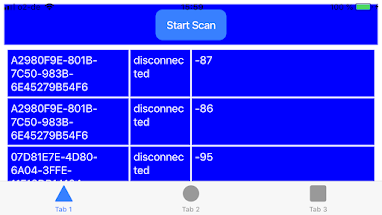The issue was to get ionic 6 running on an old iOS 12.5.7.
At the time of writing this, ionic 6.20.9 and capacitor 4 where the latest versions. By rolling back to capacitor 3, it was possible to deploy the app to the old version 12 phone.
The nodejs version used was v18.14.0
Below is the app shown listing the results of scanned devices using cordova-plugin-ble-central plugin.
npm install -g @ionic/cli
ionic --version
6.20.9
Then create a ionic project (Angular was chosen for this project)
ionic start
After the project has been created, remove version 4 of capacitor and install version 3 (https://capacitorjs.com/docs/v3/getting-started) as follows:
npm uninstall @capacitor/ios @capacitor/cli @capacitor/core --save
npm install @capacitor/ios@latest-3 @capacitor/cli@latest-3 @capacitor/core@latest-3 --save
You should see 3.9.0 when running:
npx cap --version
3.9.0
Then add the ios platform as described here: https://capacitorjs.com/docs/v3/ios
npx cap add ios
In the ios/App/Podfile file, you should see:
platform :ios, '12.0'
Now, build and deploy the project.
npm run build
npx cap sync
npx cap open ios
To add the plugin run:
npm i cordova-plugin-bluetoothle --save





